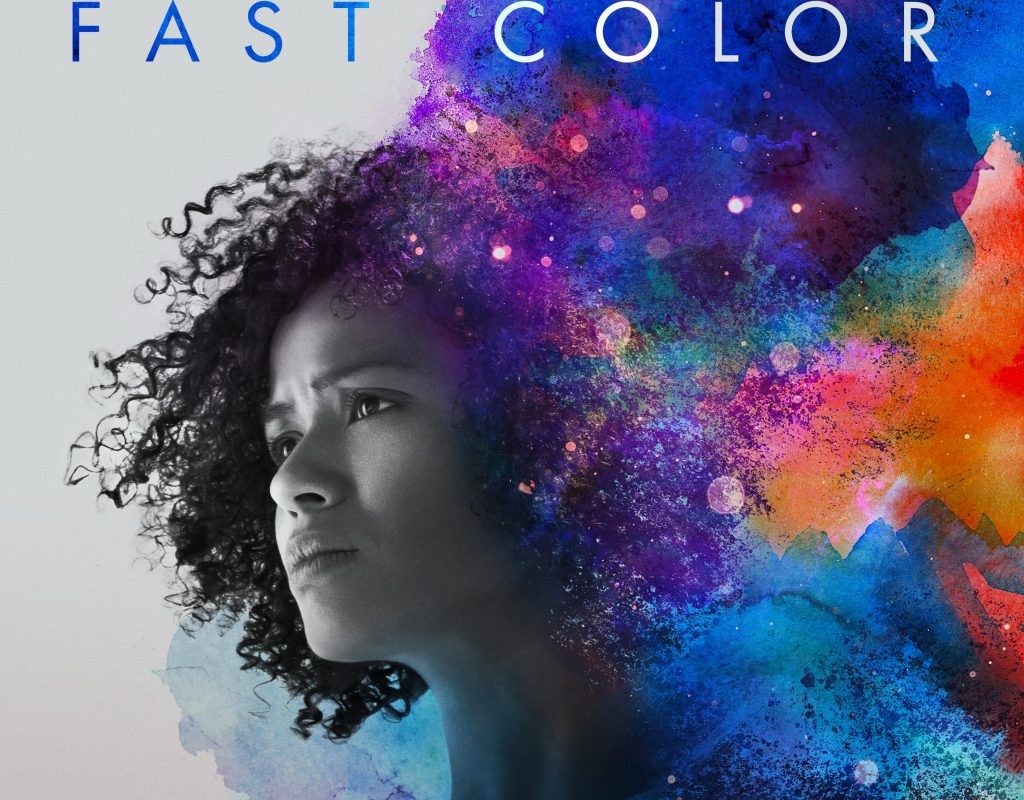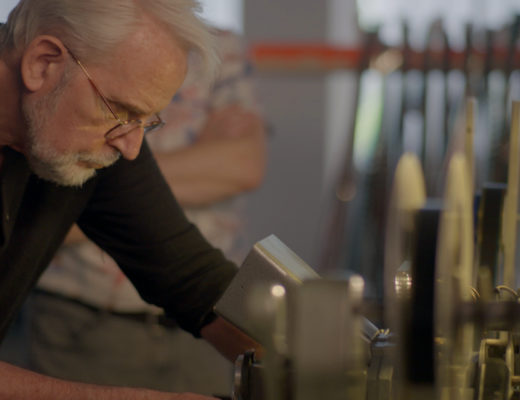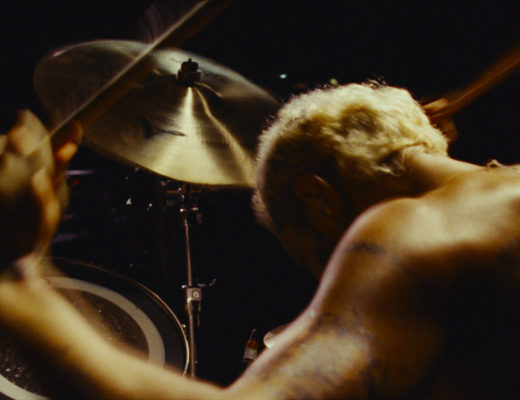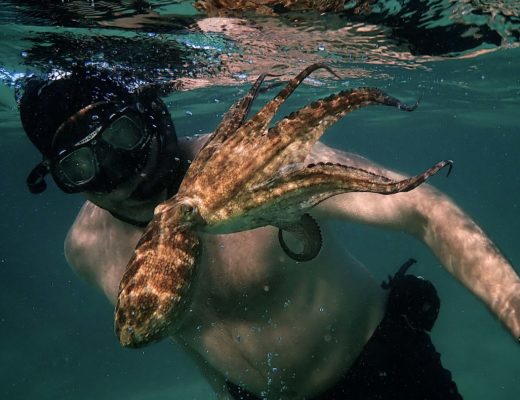In 2014, Martin Pensa, ACE was nominated for an Academy Award for Best Achievement in Editing for Dallas Buyers Club. His work since then has included. Togo (which is currently in post), A Million Little Pieces, November Criminals, Tragedy Girls, By the Sea and Wild (the 2014 Reese Witherspoon film). Pensa also has a background in VFX.
Our discussion here centers on the recent release, Fast Color.
(This interview was transcribed with SpeedScriber. Thanks to Martin Baker at Digital Heaven)
HULLFISH: Martin, I couldn’t go see the movie, but I paid for my assistant editor, Mimi Wilcox, to go and she loved it. She also provided me with a bunch of questions, which we’ll get to later.
PENSA: I too had a chance of seeing it in theatre with my wife recently, almost two years after being done working on it. I don’t know if it’s because I had more distance to it now or because we were expecting our first baby, but that screening really got to me. As a future parent, that story was resonating to me in a new way. I was proud of being a part of it.
HULLFISH: How long was the shooting schedule?
PENSA: We shot in March 2017, for 28 days in New Mexico.
HULLFISH: That’s a decent shoot. Did you edit in New Mexico? Or did you stay in L.A. the whole time?
PENSA: I edited in L.A. The entire length of post was twenty-seven weeks. And so I had 20 weeks to edit including those shoot days. So I had around five to six weeks of editing during the shoot, and then the usual 10-week director’s cut and then an additional four or five weeks afterward.
HULLFISH: Pretty typical.
PENSA: Pretty typical, yes. Although I felt lucky because for that budget or lower, I can get less time than this.
HULLFISH: How did you approach the script during your assembly? Did you stay in touch with the director at all during production?
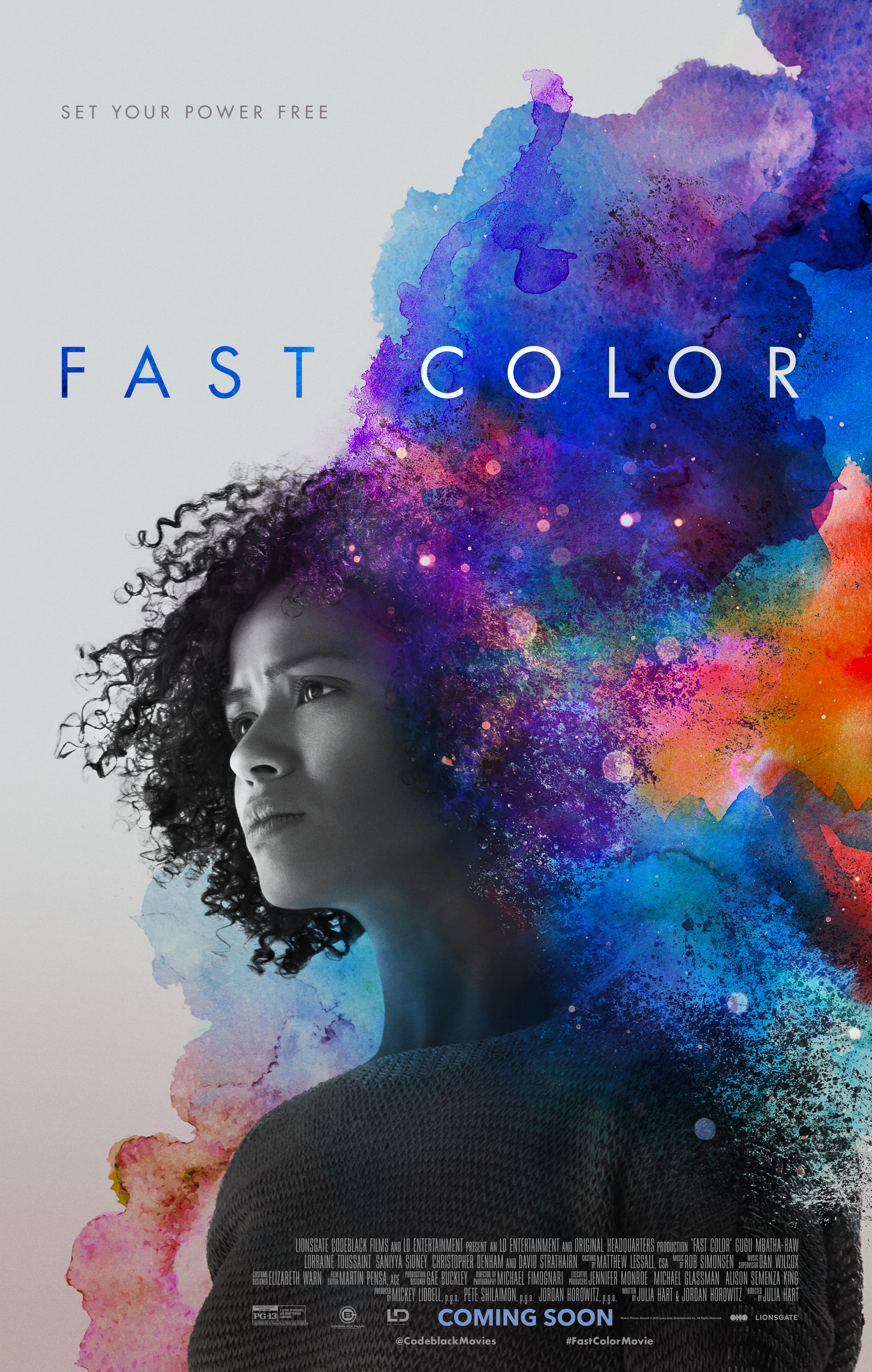 PENSA: I tend to read the script maybe two or three times in pre-prod and then I have a tendency to try to avoid looking at it at all. I just want to go fresh and try to work with what production sends me. Also, a day or two before they shoot a scene, I may revisit it in the script so I can put in some special requests to production. I like to have that collaboration, if possible, with the director. I would read the scene and be like, “Oh it’d be cool to have this shot maybe for a transition” or by looking at the shot list, sometimes I would want to cover ourselves with certain inserts or more specific shots that could link to something else from another scene. I try not to go too deep into the coverage, but since my role at that time is to make sure we have everything we need, I stay very much in communication with the director, Julia Hart in this case, or more often with her producer/husband Jordan Horowitz. For me, that level of collaboration and communication at this stage is key.
PENSA: I tend to read the script maybe two or three times in pre-prod and then I have a tendency to try to avoid looking at it at all. I just want to go fresh and try to work with what production sends me. Also, a day or two before they shoot a scene, I may revisit it in the script so I can put in some special requests to production. I like to have that collaboration, if possible, with the director. I would read the scene and be like, “Oh it’d be cool to have this shot maybe for a transition” or by looking at the shot list, sometimes I would want to cover ourselves with certain inserts or more specific shots that could link to something else from another scene. I try not to go too deep into the coverage, but since my role at that time is to make sure we have everything we need, I stay very much in communication with the director, Julia Hart in this case, or more often with her producer/husband Jordan Horowitz. For me, that level of collaboration and communication at this stage is key.
HULLFISH: I have heard of very few people that put in requests like that.
PENSA: When I jump into a movie, in the first interview that I have with the director, even before being hired, I like to be open with them that I want to be a close collaborator. I want the freedom to be bold, to try stuff that they might have not thought of, and once we’re back in the cutting room together, it’s time to play. We live in the digital world where it’s so easy to just revert and say, “I’m sorry that’s not what you had in mind. Let’s try something else.” But at least it starts a conversation and often new ideas come out of that. So far, all of the filmmakers I worked with seem to have enjoyed that process.
HULLFISH: When you’re cutting the assembly or the editors cut, do you try to stick fairly close to the script at THAT point, or do you start diverging from the very beginning?
PENSA: I start diverging immediately. If I want to cut some lines or even an entire scene, just to see how it works then I’ll do it. I’ll definitely edit the scene that they shot, but If I realize maybe we’re better off without it, or with less of it, then that’ll be in the first cut that I’ll show. Then if they want to see it with, I have that option, but for the first time they’re going to watch the movie, I want it to be a very fresh experience, even if at first some moments could be unsettling. As long as I can reassure the filmmakers that they have a movie. So I never do what we call an assembly. I do a first cut. I put sound in it. I put music in it, and VFX. I want to show them a movie, to have them experience it as much as possible without having to justify to them that “this is rough”. I would say that the most work I put in is during production: from making that first cut to organizing and to familiarize myself with all the dailies we have for easy access later. And then afterward it’s all about having fun with the director, deconstructing in order to reconstruct. Not having to worry about if the movie works or not. It works. Now let’s make it better together. Let’s play.
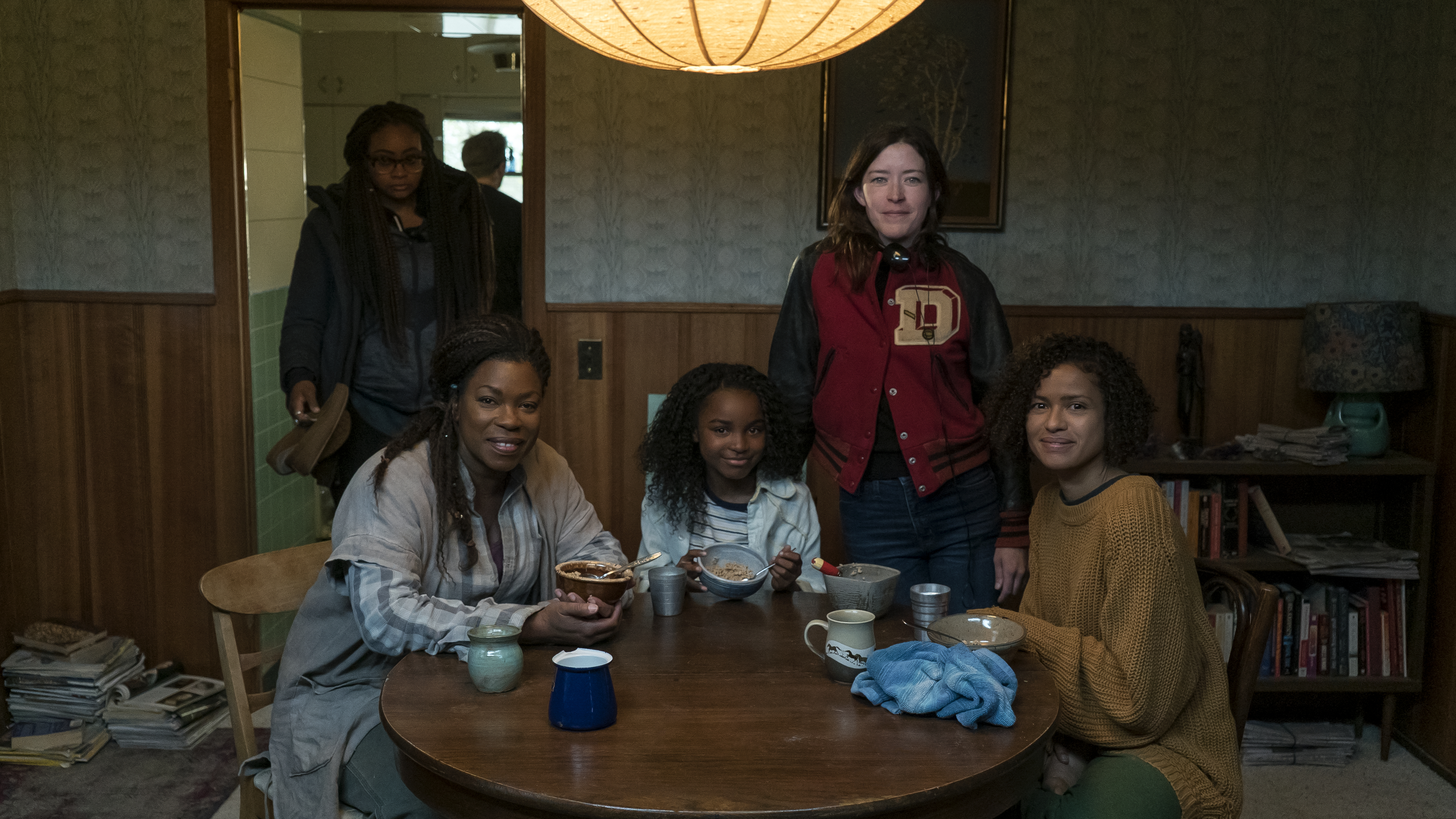
HULLFISH: Let’s talk a little bit about the process from that point on. With as much ability to do flashbacks and non-linear storytelling, where did the movie go from your first cut?
PENSA: This is a slow burn-type movie. I love moody films but I can also be somewhat of an impatient audience. If there’s no build up to something or reward for such a slow pace then I easily get out of the story. Mood is important but we also need to know when to get in and out of it. Like anything else, it needs to serve the story. But Fast Color was very well written in that regard. It knew what it was building up to and it left enough clues and engaging emotional moments with the characters that I knew reading it that the journey put forth would be so worth it. Even the choice of words really painted the tone and pace of the piece. One with an unusual light among the bleak reality of the world. One that leaves delicate breadcrumbs along the way leading to a rewarding ending. Mood and pace are carefully interwoven to tell the story of three generations of powerful women.
So to answer your question, the flashbacks were a big part of that trail of breadcrumbs. They were quick flashes, never a real scene per se (and it was never really shot as one either) until we put it all together towards the end when Ruth (played by Gugu Mbatha-Raw) finally realizes her full powers for the first time. Until that moment, she couldn’t face her past. But by finally reconnecting with her daughter, she was able to learn from her on how to uncover her true powers. And it made sense, since it’s from her viewpoint, for those flashbacks not to be too long because those thoughts are unbearable for her until she finally can control them and remember the happiness of being a mother and loving that child. In doing so, she too could now see the colors, for the very first time.
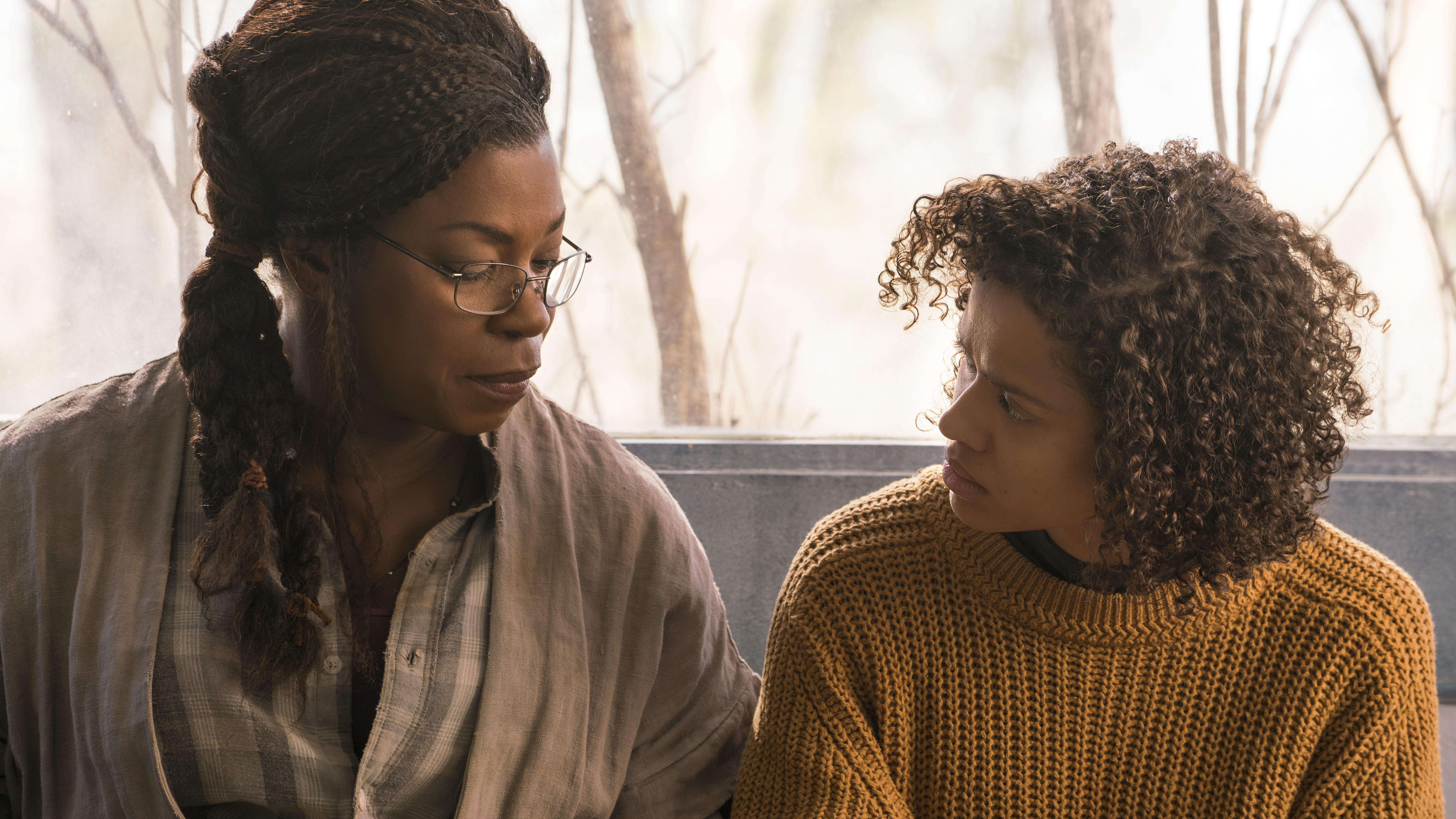
Another moment I really liked is towards the end, in that final set piece scene with everyone. When Lila says goodbye to Bo and runs towards her mom, Bo looks at her from behind. We decided to cut to that younger Ruth shot we used earlier when Bo was saying “I remember more the back of her head” or something along those lines. A memory from Bo this time. Which was cool but we needed a resolution to that sad memory. We found in between takes like a second of when that younger Ruth turns her head towards camera at the end of her run. I slowed it down by a lot and made it a moment between Ruth and her mom, back in the present looking at each other, building together new memories and finding the strength in them. I thought it was lovely – a nice bookend to that story.
HULLFISH: One of the things that is a theme in the movie is that there’s this drought and there are these intercuts with gushing water throughout the film. Can you talk about how you used that or how you paced it or when you decided to use those images?
PENSA: It doesn’t rain anymore, and the price of water skyrocketed because of it, so there’s definitely that environmental theme that’s very present. I think we actually ended up using more of those gushing water images than what was described in the script. Because water is so scarce, when we get to see those quick images of water, we know it has to be something from the past or at least a memory only. We slowly put together that those images are tied into that scene of her almost drowning her own baby daughter because Ruth couldn’t control her powers.
So anytime those images are seen, it’s because something triggers Ruth’s memories of that time, whether it is that child she meets in the motel at the beginning or towards the end when she’s pumping gas at the station before skipping town, she feels her ravaging powers emerging just like it did on that traumatic evening. Actually, it reminds me that at that gas station scene, I only had coverage on Ruth, her eyes lost in thoughts as she was pumping gas.
We decided to intercut some images of her daughter that she had just left for the second time in her life. And that’s when she starts shaking again uncontrollably, drops the gas can and exits frame. That’s when I asked Julia on set if she could get me an insert of the gas can dropping on the ground. The sound it made was the perfect trigger to cut to that exploding water pipe from her past. We could then play with the sound of the gas
spilling merging into the water filling the room in her memories.
And off we were with the climactic moment in the film where her memories are finally taking over her, and when she feels she’s going to explode, she finally realizes that channeling those memories is what is triggering her true powers. We worked a lot on that scene with Julia. I really liked how she approached sound for it as well. She never wanted to hear any sounds when we were cutting to a flashback prior to it. Only did we do it here for the first time as she let herself channel those memories fully. Finally, the sound of the water dropping off of her daughter’s skin is mixed with the sound in the present of the first raindrop. It’s a very touching and magical moment, it gives me the shivers every time.
HULLFISH: Talk to me about some stylized shots and dissolves.
PENSA: As far as the dissolves go in this movie, apparently some were already scripted. But I never really notice transitions when I read a script, I always feel like it’s something to think about in the cutting room. So funny enough, I’ve added some in places that were already scripted as such. Julia and I were on the same brain wave. She conveyed through her story and her dailies some cues that made me naturally use a dissolve. The credit goes right back to her!
Most of them are very, very long dissolves, which makes it feel more natural than one that is two seconds or less. And the main idea behind most of them is a connection between Ruth and what’s coming. Like when we dissolve to the police car, the first time we meet the sheriff played by David Strathairn. We don’t know it yet but these two are intimately connected. Or when Ruth approaches her mom’s house and sees her daughter storming out. We then use a very long dissolve from a distressed Ruth to a ghostly tracking camera shot revealing for the first time the interior of the house. We stop in the kitchen and meet Bo and Lila. We don’t know yet that they are Ruth’s mom and daughter. We may even think because of that long dissolve that this is a memory of her from when Ruth was a child. We play with the audience a bit, not spoon feeding them everything. Slowly building up…
HULLFISH: I can’t remember the last movie I saw that did not have a dissolve in it. The last movie I cut, I think I had a 160 frame dissolve. Dissolves have their purpose, right?
PENSA: Absolutely. I think some of our dissolves were easily 10 seconds long at least.
HULLFISH: The movie is about these special powers, and there are these mystical kinds of color auras — how much did sound play a part in selling this magical sense?
PENSA: I played with a couple of things. I always like to do my own sound design and I will work with assistant editors who are willing to help me do that. The director and I both thought that the sound design needed to be underplayed. We removed all sounds of traffic and birds because there’s a drought. We had mostly wind and some insects. It gave a lot of space for the music or for silence to be more resonant. When it came time to play more with the sound design for the powers, we started playing with glass and particles. But I got to give it to our composer Rob Simonsen, he really gave those colors their musical equivalent.
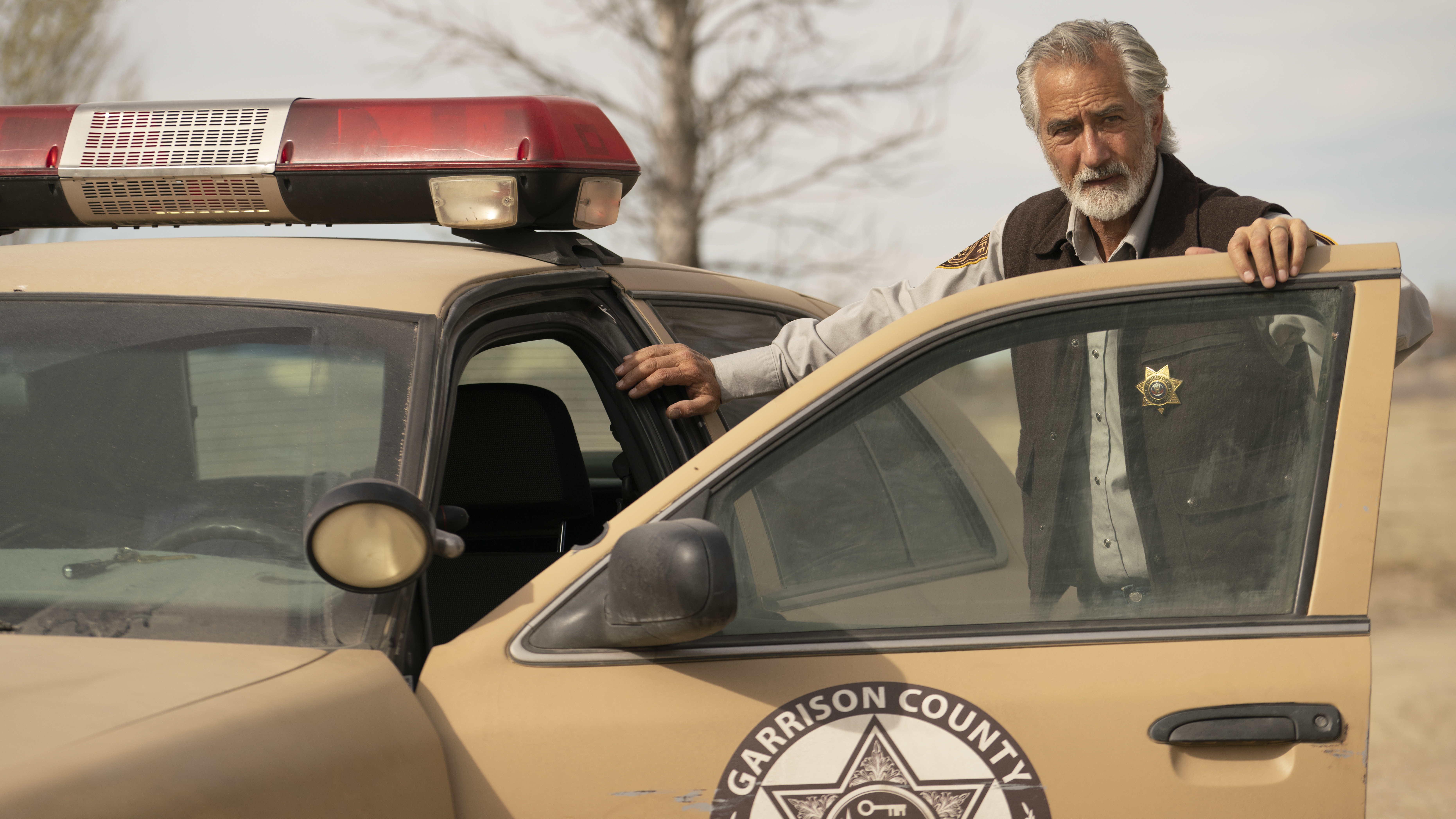
I think it’s important for an editor to live with the soundscape for a while and feel what it really needs and then hopefully we come into partnership with someone that can elevate it.
Same thing with the music. I played a lot with different temp score. At first, I was playing with some Goldmund (composer Keith Kenniff composes ambient/electronic music under the moniker Helios and post-classical piano music under Goldmund) It’s very mellow, very moody, slow piano. I played also with some more pizzicato like Arvo Part — very disturbing for when Ruth has her fits. All of that was in the world of Rob Simonsen. I usually never put temp music from the movies that the composer had scored before because I don’t want it to be distracting for him/her. But in this case, I did use some of Rob’s although it was from an album of his that’s not music from a film.
HULLFISH: Was that album something that he gave you?
PENSA: He gave me a bunch of inspirations he had just by reading the script and he threw that in. It really got to me so I used it. I even think one of the track made it into the movie, or maybe he redid a similar version of it if I’m not mistaken. Rob really did a fantastic score.
HULLFISH: Mick Audsley mentioned Arvo Part in his interview about cutting Murder on the Orient Express.
PENSA: He’s really one of those really cool neo-classical composers. I even believe it was Rob who threw that into his inspirations he sent me early on.
HULLFISH: Are you cutting just for picture and imagining sound design, because sometimes sound changes the feel of the pacing of the picture cut.
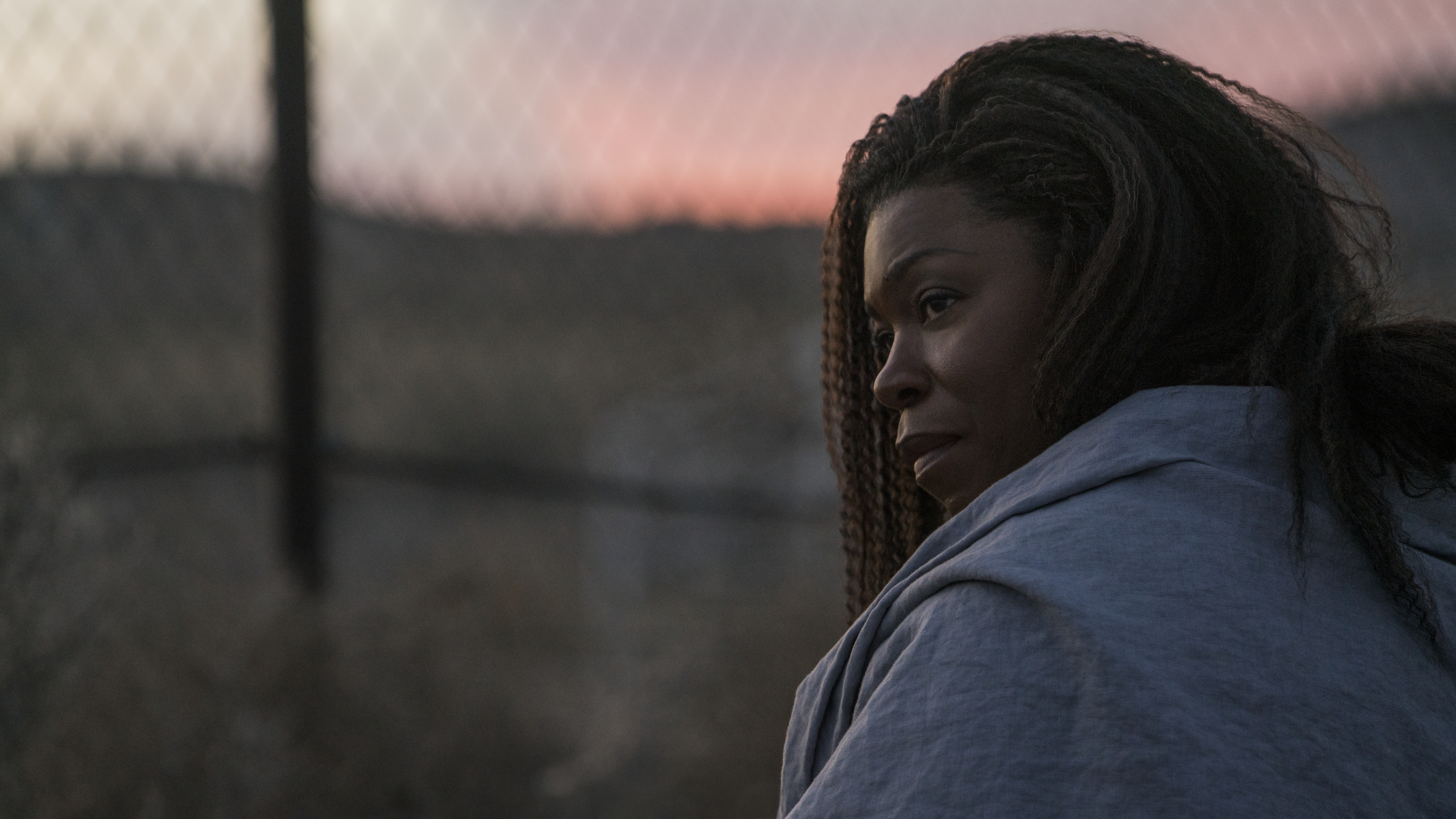
PENSA: I quickly cut a version of the scene that I want to see with visuals and the production sound, but I will put in some sound design as soon as possible, and even music if I feel inspired at that moment – or if I need more inspiration to find the rhythm of that scene.
HULLFISH: I’m so careful when I drop in a music cue of the exact time that it starts. But sometimes I wonder whether the composer feels like the music should start at a different time. Is that a conversation you have?
PENSA: Absolutely. It’s a conversation that we eventually had when we did the spotting Julia, Rob, Jordan, and I. But I feel like it’s as much a part of my job – at least before we sit down with the composer – to have a pretty good idea of how and when the music should be used. Because again it tells a story, it’s part of the film language, and in many cases, it guides me towards the mood or pace of a scene, of the film as a whole. It’s like VFX, you should have a version of them in your cut as early as possible. If they’re not CGI, there’s a good chance you can do a version of it straight in Avid.
HULLFISH: Let’s talk a little about dealing with VFX in the edit.
PENSA: I was always interested in VFX, even before filmmaking. I was more into visual arts in my teenage years, and actually contemplating working in the video game industry as a CG artist or animator. But while in Montreal, back in college, I had this film history teacher who really gave me the film bug. From that moment on, I was hooked and interested in touching everything related to film, from sound to camera to VFX…
Fast forward to after film school, I started a small production company with a friend. His speciality was VFX. I learned a lot from him. We made a couple of shorts, music videos, and corporate videos to get by. Most projects were fun, but we felt like we needed a more professional experience. So we went our separate way and I started being an assistant editor and assistant colorist for Technicolor. On the side, I continued editing. I rarely said no to any projects falling on my lap. I then moved on to a post facility specialized in commercials. I was now closer to a team of VFX artists who were always willing to teach me a few tricks on the side. I then had the chance to cut my first commercials.
I finally ended up in a Commercials/VFX company where I was the sole editor and I was helping the VFX team with some roto, comp, etc. This was the VFX company responsible for all the Jean-Marc Vallée movies. Jean-Marc was about to shoot “Café de Flore” and was looking for an assistant editor as he wanted to edit this one himself. It was the beginning of an amazing partnership as I then co-edited Dallas Buyers Club and Wild with him. All this to say that even though I had the technical background in Visual Effects, it’s Jean-Marc who taught me their true power. To use them to service the story. It opens up new frontiers.
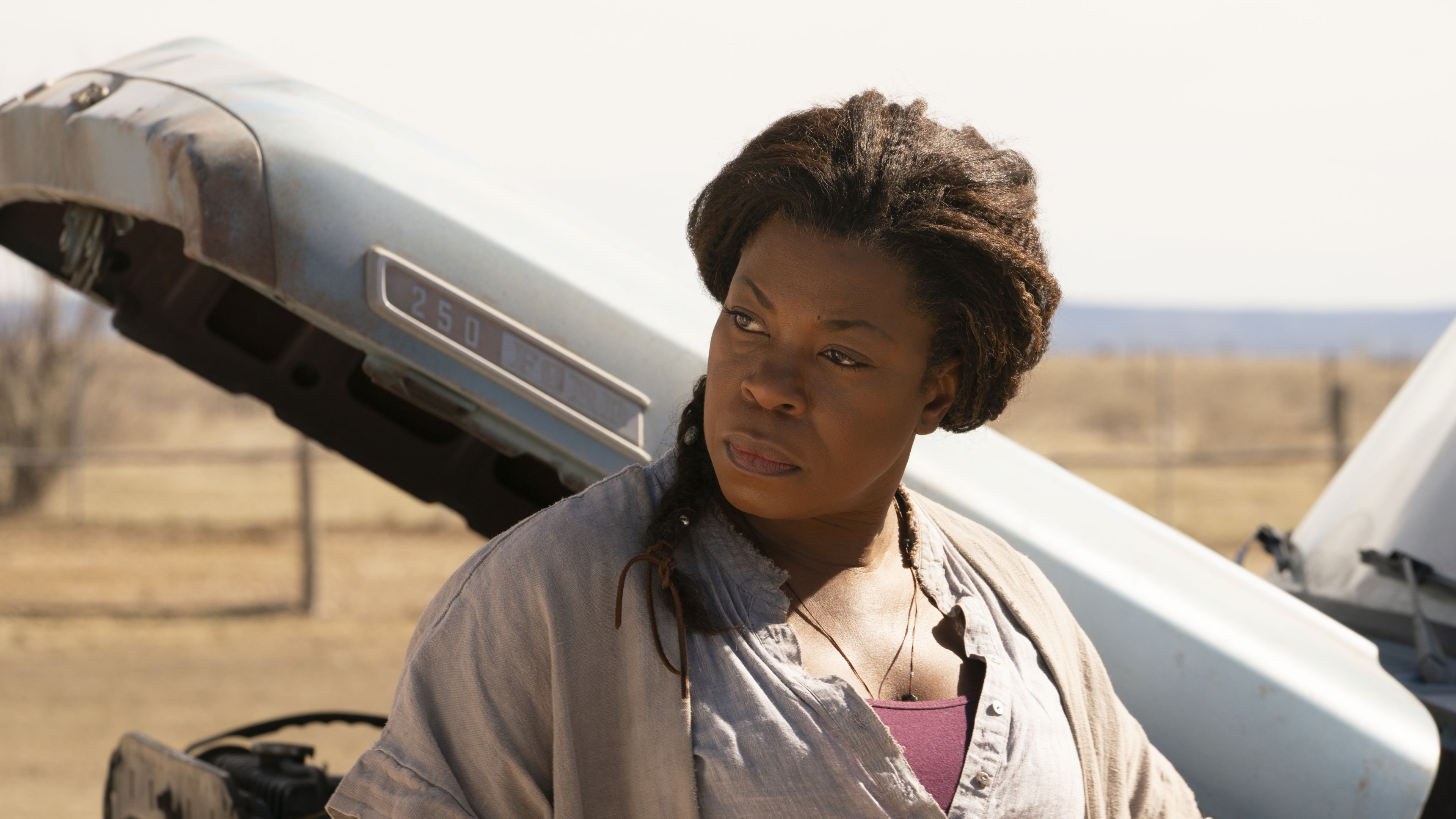
Take this example from Dallas Buyers Club: there was a couple of scenes with the character of Jennifer Garner that was there mostly for exposition purposes, where she was watching TV and seeing the news about the AIDS epidemic. There was one too many so we left one of them on the cutting floor. Later on, there’s a scene with her and McConaughey in the restaurant where he gives her a painting of wildflowers his mom left him. Soon after, we felt we were missing a scene where we wanted to convey that she was thinking about him.
We then had the idea to reuse that scene we first took out. But instead of having her watch TV, we turned it off and added on the floor right below it the painting Ron gave her. From the angle we used, it definitely looked like she was staring at the painting, sipping wine and in her thoughts. If we hadn’t tested it straight in the Avid right away, that idea might have not seen the light of day. That’s why I believe firmly that we should use all the tools at our disposition in the cutting room, from sound design, music, and visual effects, in order to feel right away what the final impact of a movie could be. It’s important we get totally absorbed by it, we are after all the first audience.
HULLFISH: Tell me the nuts and bolts of how you approach a blank timeline.
PENSA: If I don’t have the scene that’s before or after the scene that I’m cutting, I really try to imagine how those scenes would transition to one another. I would watch the dailies for that scene, obviously, then cut the version I think is the best for the story with what I have so far. I’ll then adjust it when I get more pieces of the puzzle. Pretty basic stuff!
As I start cutting, I am first driven by the performances. I’ll see how I can fit them in. If I can’t — if I like the sound delivery of that performance — I will definitely mark it, because I might want to steal that line and replace it on whatever shot I decide to pick for that portion of the scene. So I do a lot of line replacements. To me, it’s very musical. If it’s the right tone for the character at that moment then I really want to save that and see if I can fit it in. I try not to be too attached to the picture. Dialogue, more than anything else, helps me start structuring the scene and then the visual will follow naturally. Performance remains for me the foundation of a good scene.
HULLFISH: Do you use selects reels?
PENSA: Yes. I always work with string outs. I’ll ask my assistant if s/he could put all of the clips from one scene as a string out. I hate spending my time double-clicking shots in a bin. I load the string out in my source window. I really want the assistant to watch the footage in real time. I love to work with assistants that want to become editors. It’s a good exercise. I tell them to go through the footage, mark what s/he thinks are good performances or good camera movements or interesting stuff, or mark what’s different from one take to the other. Or maybe a moment where the actor used a word or a line that wasn’t scripted, or any improvisation. Anything that’s peculiar or different, mark it. And so when I look at my string out I already have a first pass of selects that someone I trust marked. If for some reason I was in a hurry, I could go straight for those takes to start my cut. But usually, I’ll start watching it all and do my own pass of markers.
HULLFISH: Do each of you use different colors?
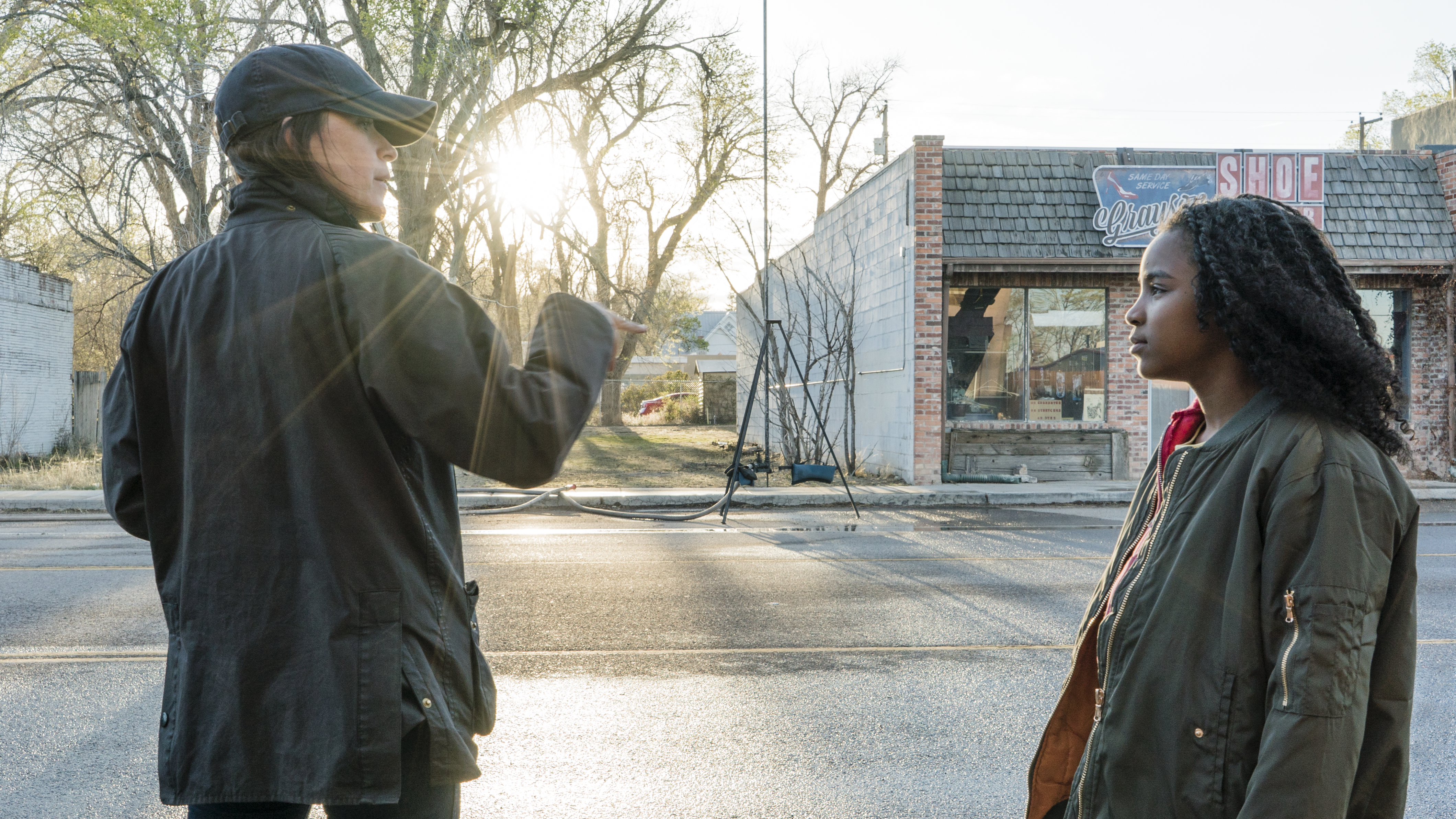
PENSA: Yes. We use green for those special moments I mentioned and then red for the start on “action.” Black for when the action is over because nowadays there’s a lot of series. Blue for when there is a technical problem with the image or with the sound. Those are mainly the ones I use.
HULLFISH: I do something very similar, but I have my own color codes, so those colors make no sense to me!
PENSA: Something that frustrates me so much with Avid, if I may go on a rant here – even though I love Avid for many, many reasons – is how it treats multicam sequences one way in the record monitor and for some weird reason another way in the source monitor. As you probably know, if you load a sequence in the source monitor and there are multicam group clips in it, you cannot watch it real time in multicam mode, unlike in the record monitor. If I press stop I can see my multicam window but as soon as I press play, it shows me only the latest selected camera. It’s amazingly frustrating, it doesn’t make any sense why it’d work in one window and not the other. My assistants and I, throughout my various projects, looked online for a solution for this but nothing… Unless you know one? I know I’m not the only one who needs that feature to be implemented.
HULLFISH: I’ll see if I can get that to my connections at Avid. To go back to editing — it sounds like since you use string outs, you may not care too much how the bin is set up.
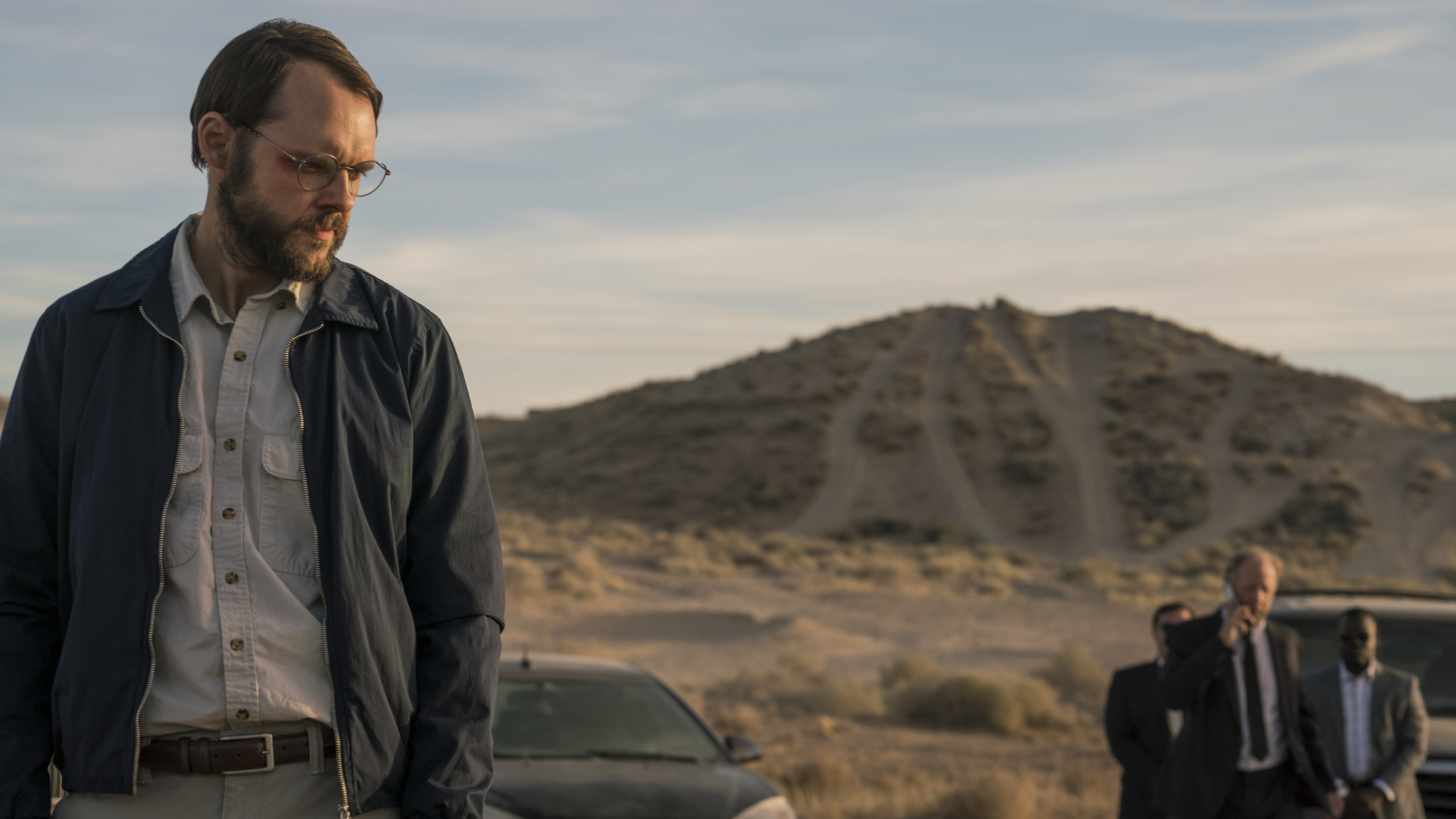
PENSA: That is somewhat true. Although I used to be an assistant myself, so I still have that habit of having everything looking neat in the project. Simply because I’m not the only one working in it. Various assistants could come and go during the project, VFX editors, etc. Or another editor might have to replace me for some reason, who knows! So I’ll tell my assistant that I want my bin in List View with the Frame column as big as possible so I don’t have to go into Frame view. It’s a similar display or look to the bin as using Script View. But Script View doesn’t have all the data that I want displayed. So in List View, I can customize a better version of Script View. But yes, I do not care that much. Just maybe while I look at a scene for the first time, I like to take a quick glance at that bin basically to be aware of the transcripted scripty’s notes or other notes made by my assistant.
HULLFISH: That’s very interesting. That’s why I do these interviews because everybody’s got a different methodology. Tell me a little bit about cutting back and forth between an A story and a B story, which happens a little bit in this movie.
PENSA: The A-story is obviously Ruth and her family.
But for the B-story line about the government agents, there weren’t that many scenes of them in the script. We ended up realizing that there were moments in the film that needed a bit more danger factor. So we decided to divide some of those agents sequences to up the stakes throughout — trying to sustain the lurking threat as much as possible.
HULLFISH: You needed that tension longer.
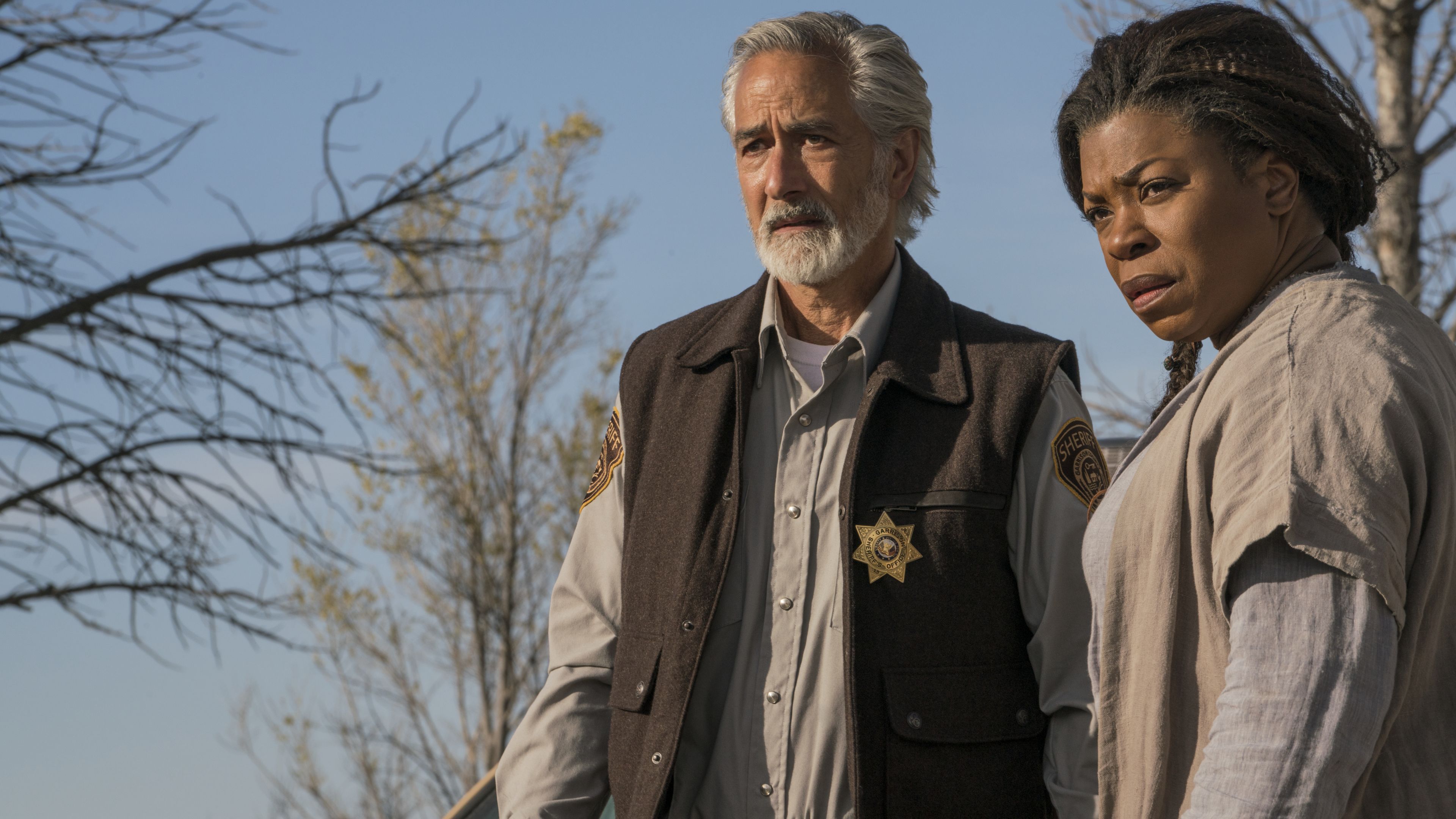
PENSA: Exactly. The main agent Bill, who we discover is actually more of a scientist than an agent, is played by Christopher Denham. Technically Ruth killed his partner at the beginning because he was trying to abduct her. So Bill follows the mystery to her. But she manages to escape from him as well. He’s very curious and meticulous and his scenes are almost contemplative as he finds clues of her whereabouts, slowly closing in. Although it’s hard to say what he is capable of, so until they meet up again, the menace remains real.
HULLFISH: Talk to me about the narration over the cold open. What happens there?
PENSA: Actually that scene was not in the script. It’s a scene that we created later on in the cutting room. In the script, it starts right away with Ruth running away from we-don’t-know-what. We always had a small problem with the beginning. People had trouble figuring out what kind of world she lives in, who she was. It’s not like a Mad Max-type cut and dry post-apocalyptic world. It’s much more subtle than that. So we wanted to give a hint of that early on.
Bo who is Ruth’s mother, played by the great Lorraine Toussaint, in just a few lines describes that the world is dying — reading from a diary. Her voice is full of wisdom and warmth. She sounds like a mother. She talks about Ruth with lots of worry. Where could she be? How can she survive alone in this world? Then we cut to some opening credits followed by a woman on the run. It’s now easy to guess this might be Ruth. Then the movie unfolds and now we have much less trouble following her. We actually want to know her more at that point. Someone else out there is worried about her, and rightly so because she looks in deep trouble.
Later on in the movie, when Bo and Ruth reconnect, she reads a passage from that same diary. The women in their family have a lot of history. And so this diary, even at the beginning of the movie carries a lot of secrets. It felt right to reveal a tiny piece of it in the opening to ease the audience into what they’re about to see. And when we discover who that voice belongs to, later on, it’s that much more satisfying.
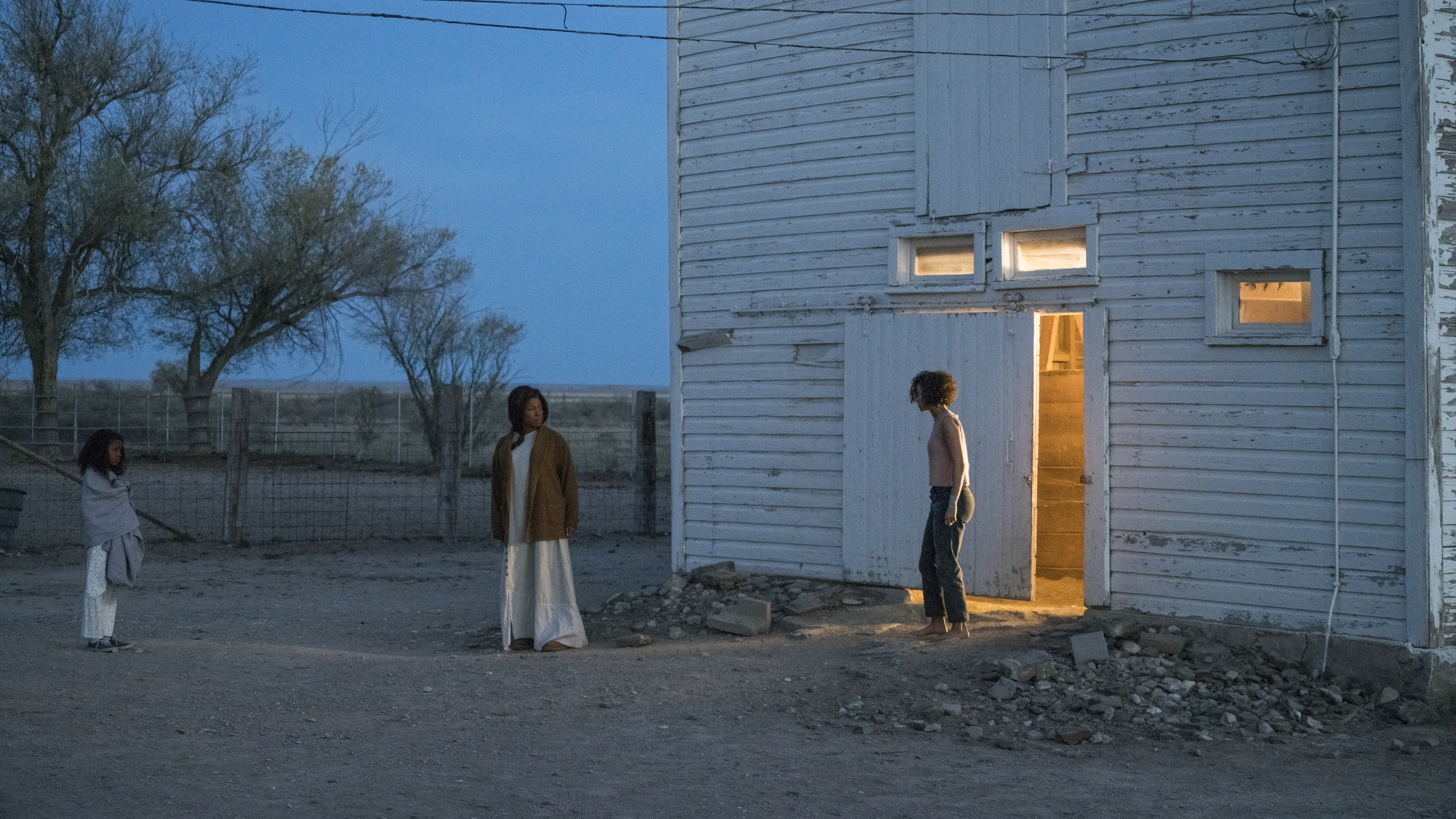
HULLFISH: So that’s something you had to have ADR’d in post? Or was it part of a scene that had been deleted?
PENSA: We ADR’d Lorraine for that. We tried so many things. Julia and her husband, Jordan, co-wrote the script and they were in my room almost every day. They were writing different versions of that beginning with me and Julia was recording on her phone a temp that we would lay down in the Avid. We then would sift through stock footage of dry and decrepit environments because we couldn’t reshoot any of that. We used a portion of that insert of the diary that we see later, pages being turned by who we assumed was the narrator. It’s not that long of an intro but we did a LOT of versions of it. But as we all know, the beginning of a movie is so important to hook the audience and convince them that this is going to be a ride worth riding. And I think finding this solution not only helped for clarity but elevated the material.
HULLFISH: I love that the solution to the story problem came in post.
PENSA: We didn’t do a proper test screening. We did one family and friends and we showed it to some other people we trusted and we got the comment often that they were a bit lost in the beginning. And if you’re lost in the beginning, even if it’s intriguing and mysterious, you can’t focus on the main character’s journey. We didn’t want it to be too expositional. It needed to be elegant and integrated, justified. Hopefully, it worked.
HULLFISH: Can we chat about Dallas Buyers Club? I was actually asked — on a movie that I cut — to mimic the style of Dallas Buyers Club. To me, the shooting style must have dictated a lot of the editing style.
PENSA: Yeah. But we need to adapt to each story and to each director. And on Fast Color I was dealing with Julia, who is a brilliant filmmaker who I really admire. She knows what she wants and knows what she likes and she’s an activist and wants to tell a story of how the world we’re leaving to our children is dying. She’s basically telling a very ecological and feminist story. To tell that story we needed to take the proper time and adhere to the right rhythm. We could have edited it like Dallas Buyers Club just for the reason that it’s from the perspective of our main character and she has flashbacks, like Ron Woodroof in Dallas Buyers Club.
But Dallas had another rhythm to it that matched the chaotic character that is Ron Woodroof. It needed that type of energy. Whereas Fast Color we needed to set up the big power moment at the end. We needed to take our time. The first time we see the power is from Bo, the mother. As she smokes a cigarette outside while listening to Nina Simone, she disintegrates that cigarette and spins around its particles in the air. It’s very beautiful and elegant. She’s simply doing it for her own pleasure. So it’s nothing chaotic or crazy. Same thing later on with Lila who deconstructs a bowl and reconstructs it. It’s very delicate. There’s nothing to go crazy about. If Ron Woodroof from Dallas Buyers Club had superpowers he would have gone haywire with them and that would have been part of that story and that style of editing. I need to adapt to each story. I don’t like to repeat myself and I fight hard not to… but it’s not always that simple.
HULLFISH: Tell me a little bit about how you collaborated with this director and how she likes to either direct you or work with you and how you worked with her.
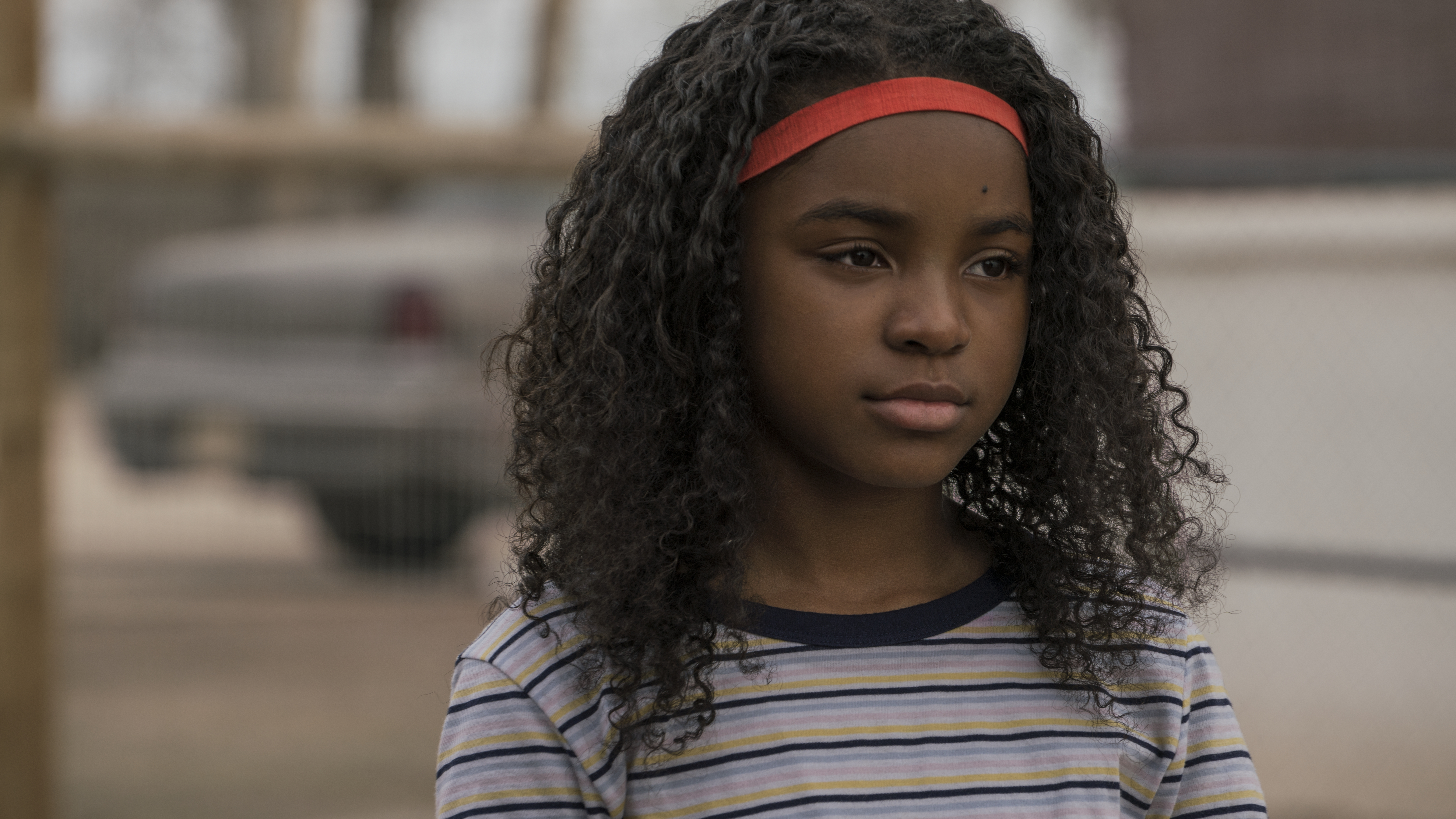
PENSA: Yeah. As I said, we had that first conversation when I got interviewed. I asked her if it was OK if I tried my own version first. She would still want to see her version at some point, but would then compare both and see what we gained or lost in each. So there was definitely some back-and-forth during the shoot and then afterward she was in my room almost every day. And we would start from the beginning and look at performances. She was very hands-on, always re-writing, being bold with cuts and the reorder of scenes. She was a great collaborator.
She knows what she wants and how to communicate it. So I was always making sure that she didn’t have to compromise on her vision because of a shot that we didn’t have or when she wanted to play in a long-shot that was sometimes too long in terms of pace. I think she was right in many cases to stay longer on those characters, but she didn’t have much hope at first that we could take much of the air out between the lines of dialogue. But timewarps and FluidMorphs (Avid transition to seamlessly blend a cut) would come to the rescue and I would take out a good chunk off of some of the silences that we didn’t like. Even on a 2-shot, I would do it, sometimes having to split screen the two characters and apply to each their own sets of morphs and speed-ramps. There were times where I had close to ten FluidMorphs in one single shot. And I was able to get rid of certain words or even lines in the middle of a shot with that device. I didn’t want Julia to compromise in any way, and I think she was happy not to. I always use a lot of FluidMorphs and speed ramps in every project I work on to regulate the pace and preserve the storytelling syntax a scene needs, but I probably used those devices more on Fast Color than on any other film I worked on before.
HULLFISH: I’m working on a movie where the character is on the phone a lot and the person feeding the lines was a bit slow, so it slows down all of the reactions of the actress, so I was using FluidMorphs and speed ramps to pull up all of those timings because I couldn’t just jump back and forth between the close and the wide every single line and there was nothing else to cut to.
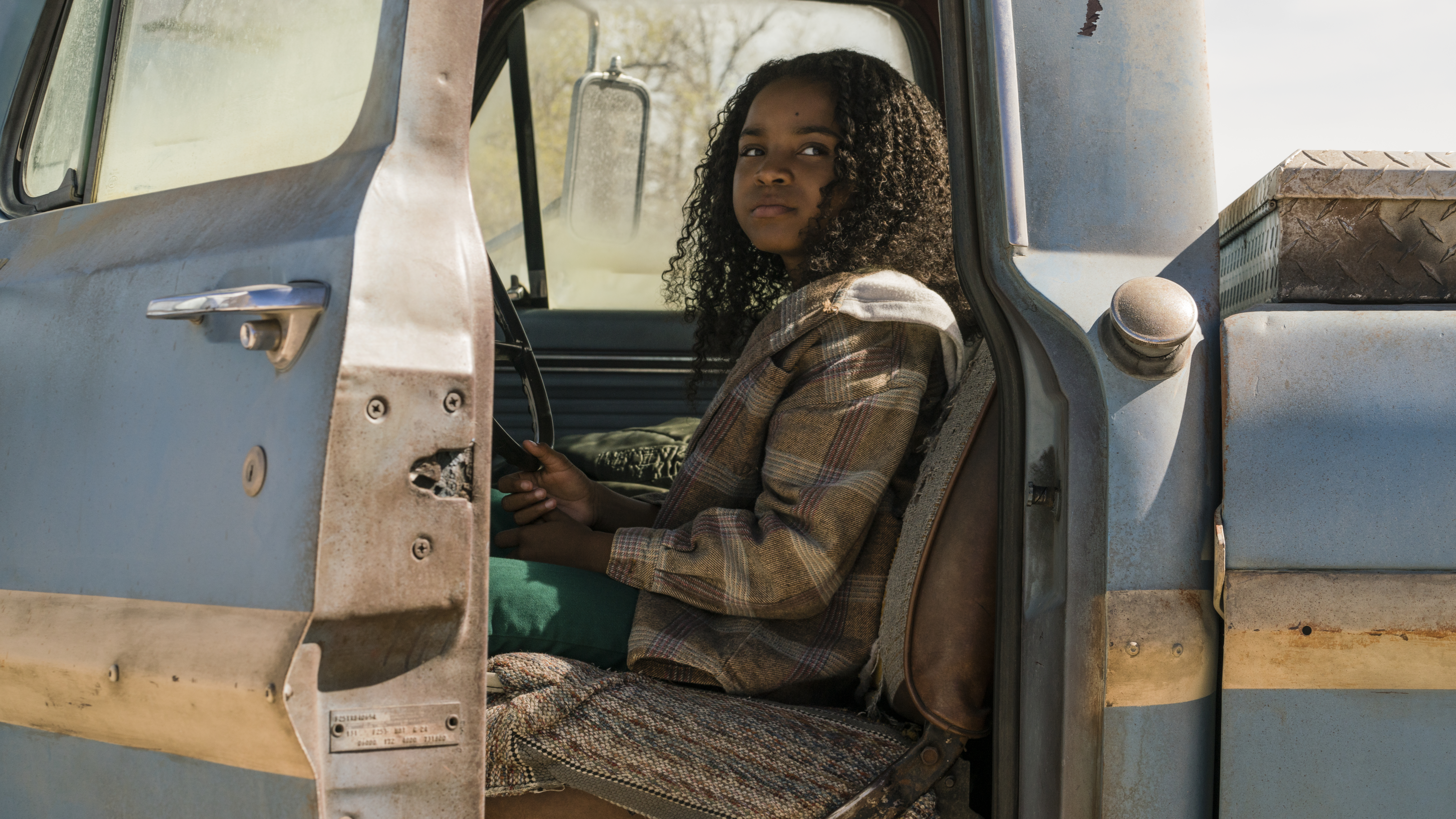
I’m still interested in this idea of her being in the edit suite as much as she was. Was it that she felt like the whole scene needed to be redone or was she just asking, “On this shot or on this line I want a different performance”?
PENSA: There were days where we would look through most of the dailies of a scene just to remind her of all the options we had for it, or to see if we could get inspired by something else that we forgot we had, now that we had a better sense of the movie as a whole. Sometimes, we were just focusing on shaping the performances with various nuances that the story was needing at that specific time. Maybe here Ruth is too angry compared to what we established prior. Our actresses gave us a great range so we were able to find the right emotional balance for each scene. I always have vivid memories of Dallas Buyers Club in terms of shaping performances. Matthew McConaughey was very much in his character on set, and he might have gone at it a bit strong at times. Not that he played false, but that level of intensity would have been too much to sustain throughout the whole movie. At first, Jean-Marc (director, Jean-Marc Vallée) would let him do his version and slowly bring him down and down and down in intensity which in the end — in the cutting room — we were very lucky to have the full range of Ron Woodroof anywhere from being completely crazy to more tame and in his head. In that way, we were able to regulate the temperature of the performance. And that’s something I really love about my work. I’m so lucky to be able to play with the performances of such brilliant artists.
HULLFISH: Regulating the temperature through the choice of different performance is so interesting to me. Some actors only give you one temperature unless you’ve got a director that’s driving them to that performance.
PENSA: Yeah that’s true. Sometimes it’s more challenging obviously, but that’s the part that I love the most is to create something that was never really there in the first place. We discover things in the cutting room that was never there on the page. We write scenes that were never shot. And for that sometimes it requires some Frankensteinism.
HULLFISH: You’ve probably also experienced the case where you remove a scene or two, but the actor is thinking that their character arc is going to go through those scenes, but now those scenes are missing so the performances possibly have been compromised from the actor’s original vision.
PENSA: Absolutely, the story and the characters arcs rarely remain the same from script to final cut. We need to adapt and think outside the box in order to tell a new and improved story in the edit.
HULLFISH: How do you judge someone else’s editing?
PENSA: To be totally honest, I think it’s hard and very unfair. To be able to judge properly you’d need some behind-the-scenes video of what was going on in the cutting room. What did s/he start with? Did s/he cut some scenes out? Why? Did s/he saved a performance from total disaster?
Of course, you can look at a film and see that it is well-cut. But you don’t know how much it is the director, or the editor, or their perfect collaboration. Still, it’s a bit mysterious, right? I would say it’s easier when the editing is a bit more “flashy”. But in the nice way of saying flashy, not in an action-driven way. Like Hank Corwin.
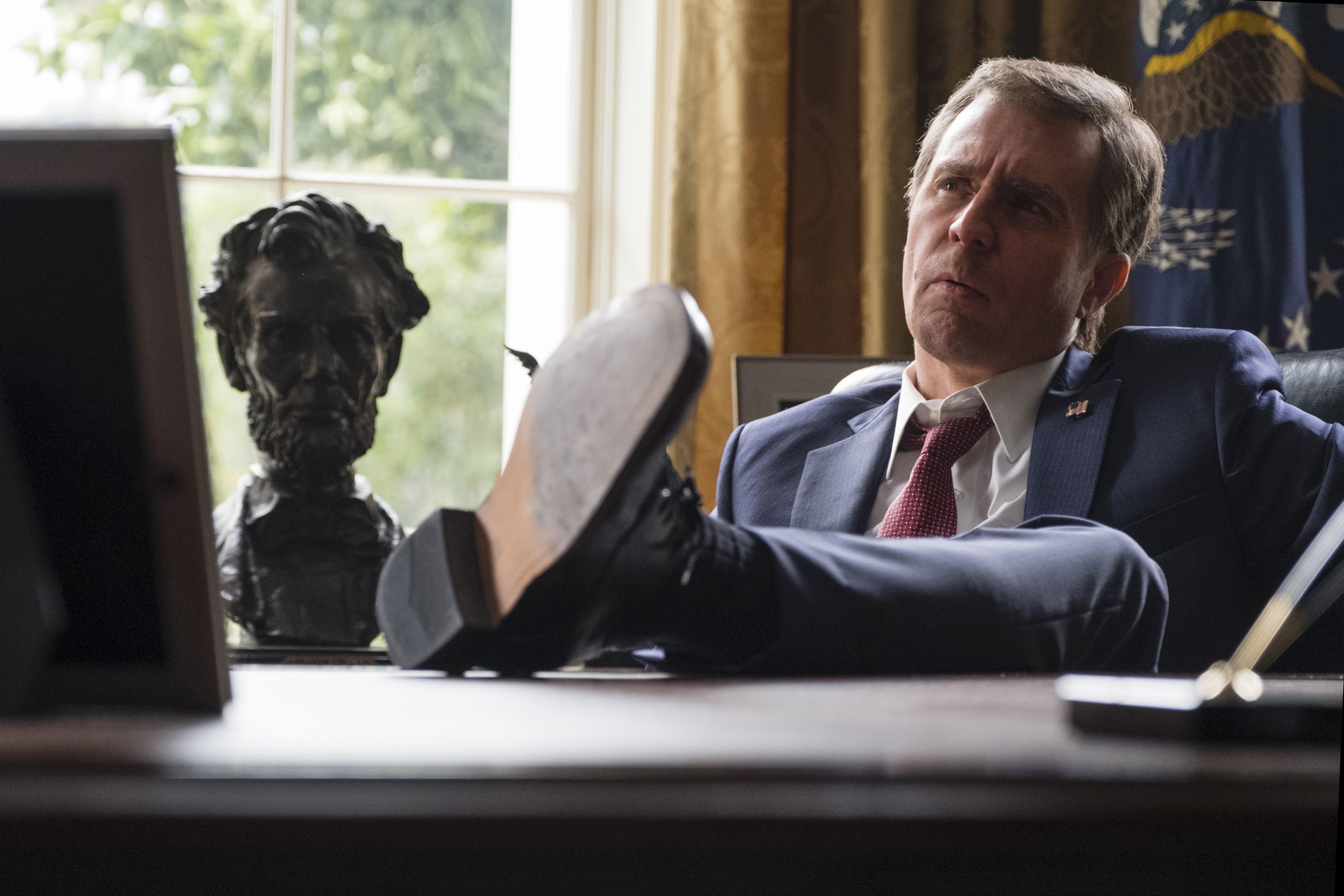
HULLFISH: Vice and Big Short. (Here’s my interview with Hank Corwin)
PENSA: Yes. It’s obvious that Hank had a big say in it. You can tell that a lot was found in the edit, there’s no way all of this was scripted as is. I really like his approach. Same for Lee Smith who did Dunkirk. It was so well cut. To me, it felt underplayed in a very natural way. Letting the story be told. And yet there is this level of complexity in the way the timelines are intercutted. He definitely deserved that Oscar.
HULLFISH: (Here’s my interview with Lee Smith, ACE, on editing Dunkirk. In two weeks, I’ll talk to Lee about editing X-men: Dark Phoenix.) Those are both guys I’ve interviewed. Couldn’t agree more.
PENSA: Still, we don’t know what control they had or what they were up against or what the footage was or what the coverage was. It’s hard to tell if a bad movie or bad decisions were made solely by the editor. Most likely there’s another catalyst for those fiascos. Either the director or producers, the studio can sometimes have the tendency to step in and F around with it in a big way. Anyway, all that to say that it’s very hard to put the blame on anyone if you weren’t behind the curtains to witness it.
HULLFISH: How do you pick an assistant editor?
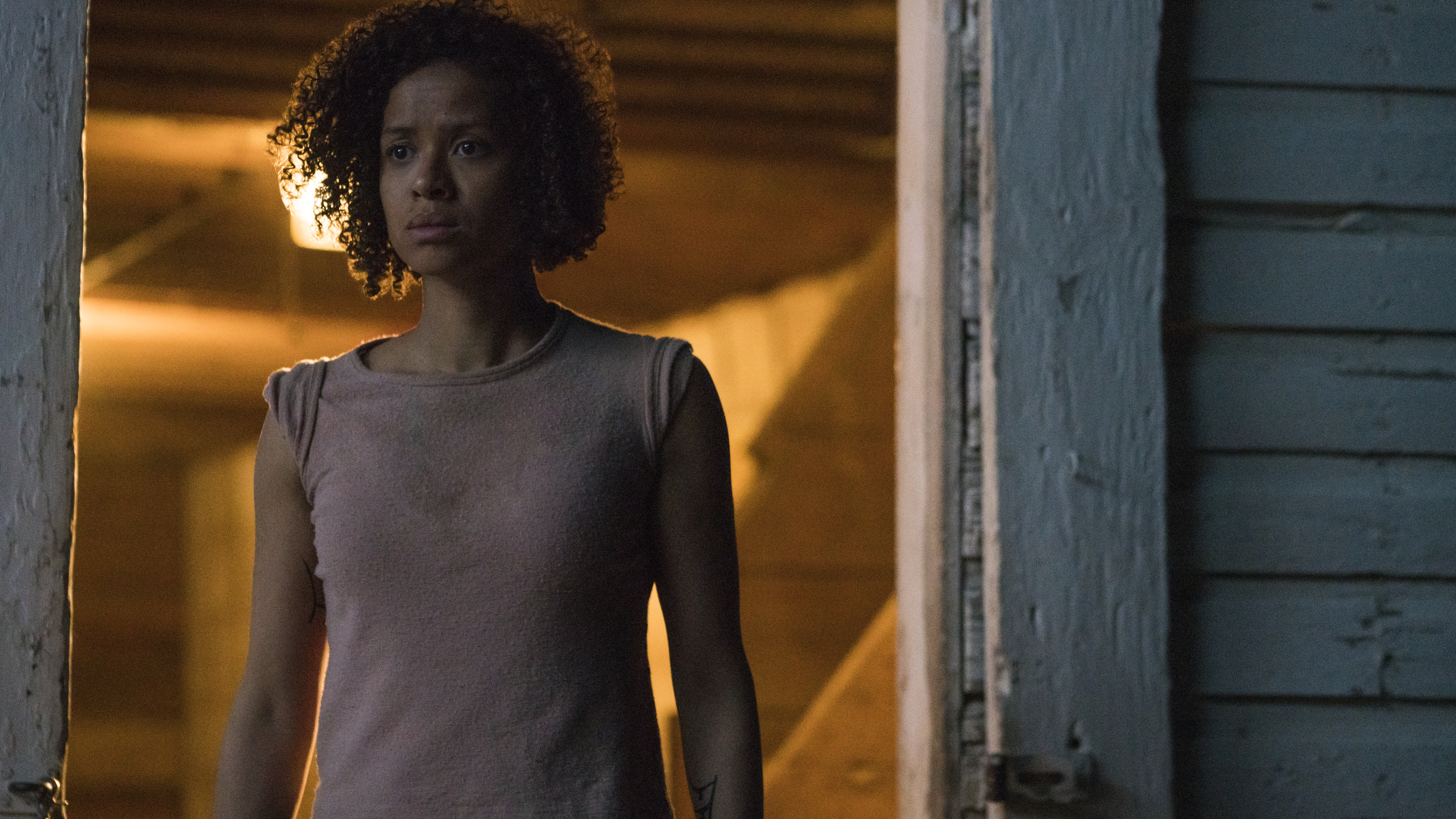
PENSA: That’s a good question. I often interview people that were referred to me. First of all, I check if we see eye-to-eye. We just need to get along well. Period. I also need to feel that that person has initiative and will be ready to work more hours if needed — try some stuff on their own. I don’t want to have to tell my assistant what to do. At least as little as possible. It’s more of a hunch I guess in the end, but so far I’ve been very lucky. I’ve had excellent assistant editors and they’re always very busy and very hard to work with again afterward because they’re already on something else. For Fast Color, I worked with Tommy Bernard. A cinephile like no other. His passion for movies and his knowledge of its history is contagious. Not only that, he was always very curious and ready for new challenges. I always encouraged him to give me his sincere opinion on the cut. He kept the Avid session clean and organized, helped me in many instances with sound design and VFX. A real gem to work with. We actually met on Wild where he was post P.A. When I learned through the vines that he had focused on editing and was now a really good assistant editor, I was excited to work with him again. Great person to have in your corner!
HULLFISH: Thank you so much for your time this evening. I really appreciate it.
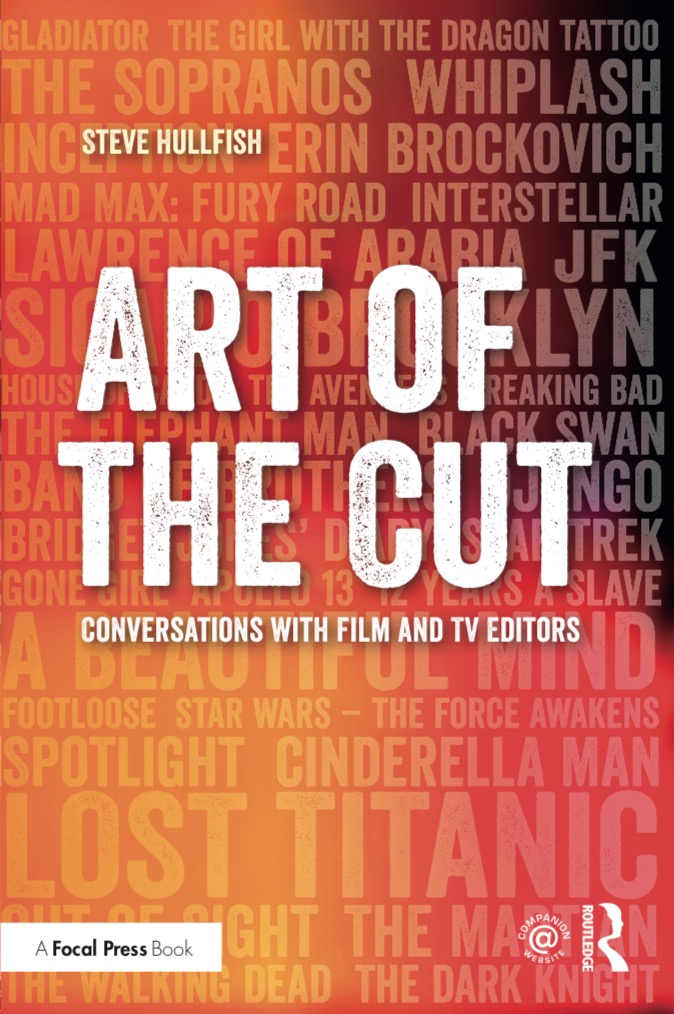
PENSA: It was really wonderful talking to you as well.
To read more interviews in the Art of the Cut series, check out THIS LINK and follow me on Twitter @stevehullfish
The first 50 interviews in the series provided the material for the book, “Art of the Cut: Conversations with Film and TV Editors.” This is a unique book that breaks down interviews with many of the world’s best editors and organizes it into a virtual roundtable discussion centering on the topics editors care about. It is a powerful tool for experienced and aspiring editors alike. Cinemontage and CinemaEditor magazine both gave it rave reviews. No other book provides the breadth of opinion and experience. Combined, the editors featured in the book have edited for over 1,000 years on many of the most iconic, critically acclaimed and biggest box office hits in the history of cinema.

Filmtools
Filmmakers go-to destination for pre-production, production & post production equipment!
Shop Now